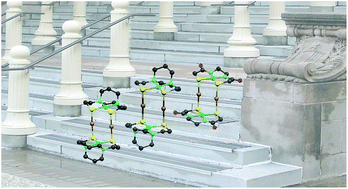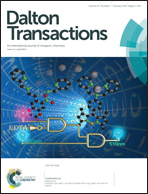Abstract
Development of square planar cis-dithiolate nickel complexes as metallo S-donor ligands focuses on the synthesis and structures of gold(I) heterometallic clusters derived from assemblage with three NiN2S2 complexes: Ni(bme-daco), Ni(bme-dach) and Ni(ema)2− (bme-daco = (bismercaptoethanediazacyclooctane); bme-dach = bismercaptoethanediazacycloheptane; and ema = N,N′-ethylenebis-2-mercaptoacetamide). With Ph3PAuCl as the gold source, examples of simple S-aurolation retaining the PPh3 on Au+ were obtained for [{Ni(bme-daco)}AuPPh3]+Cl− and [{Ni(ema)}2Au4(PPh3)4], where the latter complex demonstrated unsupported aurophilic interactions between [{Ni(ema)}Au2(PPh3)2] units in its X-ray crystal structure (Au–Au = 3.054 and 3.127 Å). Three compounds containing fully-supported digold units with Au–Au distances in the aurophilic range of 3.11 to 3.13 Å were found as stair-step structures in which planar NiN2S2 step treads are connected by planar S2Au2S2 risers at ca. 90°: [{Ni(bme-daco)}2Au2]2+(Cl−)2; [{Ni(bme-dach)}2Au2]2+(Cl−)2; and (Et4N+)2[{Ni(ema)}2Au2]2−. Electrochemical data from cyclic voltammograms demonstrated a positive shift in NiII/I couples for the [{NiN2S2}xAuy] complexes as compared to the NiN2S2 precursors and a ca. 700 mV decrease in communication between multiple NiN2S2 units as compared to [{NiN2S2}2Ni]2+ analogues in slant chair conformation. The analogy between NiN2S2 metallodithiolate ligands and diphosphine ligands holds here as in other examples of inorganic and organometallic complexes.


 Please wait while we load your content...
Please wait while we load your content...